Rottweiler Dog Breed Information
The Rottweiler is a powerful and storied breed known for its robust build and rich history. These dogs are often seen as protective family pets or skilled working partners. A Rottweiler’s adaptability has allowed it to move from a cattle-driving dog in ancient Rome to a valued modern service animal. This breed embodies the complexities and abilities found in dogs. When looking at Rottweiler’s past and the qualities that help it excel in various roles, it’s essential to see beyond the typical labels.
These dogs are a blend of tender affection and natural alertness, which leads to questions about what influences their behavior. Understanding the upbringing and environment that shape a Rottweiler can reveal much about the breed. It also sheds light on the larger story of how we view different dog breeds within our communities.
Key Takeaways
- Rottweilers are versatile, transitioning from ancient herders to service animals.
- These dogs combine affection with a keen sense of awareness.
- A Rottweiler’s behavior is shaped by its upbringing and environment.
Quick Facts
Rottweilers stand out as a strong and sizable breed, notable for their impressive size, with males reaching heights of 24 to 27 inches and females standing 22 to 25 inches tall. These dogs are heavier, weighing between 80 to 135 pounds.
Typically, a Rottweiler’s lifespan is around 9 to 10 years, and they are part of the Working Group. With a lineage tracing back to the mastiffs used by Roman legions, Rottweilers were initially used for herding. Their responsibilities grew to include cattle driving and protection duties.
The American Kennel Club, established in 1884 and a respected authority on dog breeds, recognizes Rottweilers for their distinctive black and tan coats, well-proportioned skulls, and muscular build. These dogs are known for their loyalty, confidence, and strong protection instincts.
Rottweiler Dog Breed Pictures
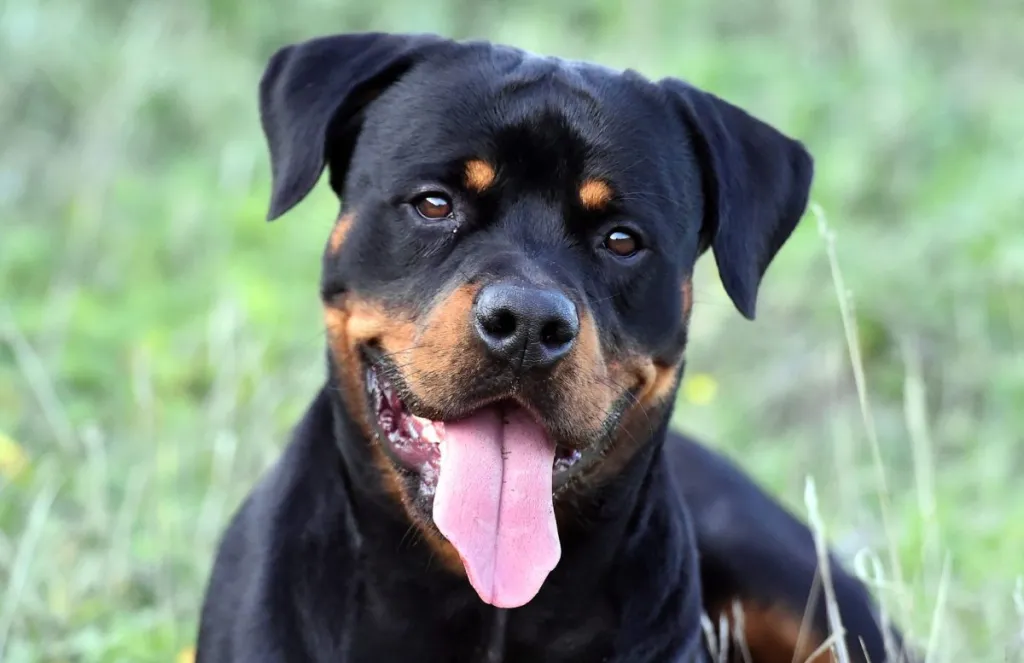
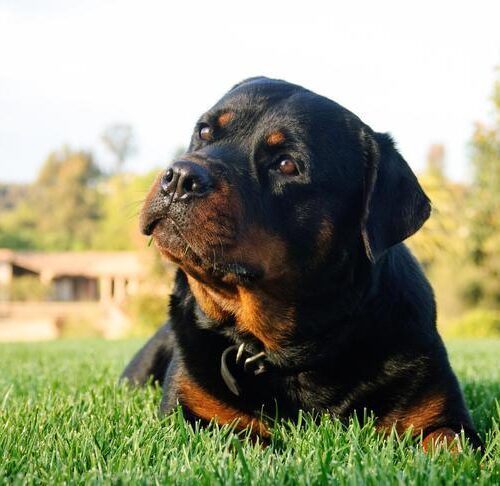
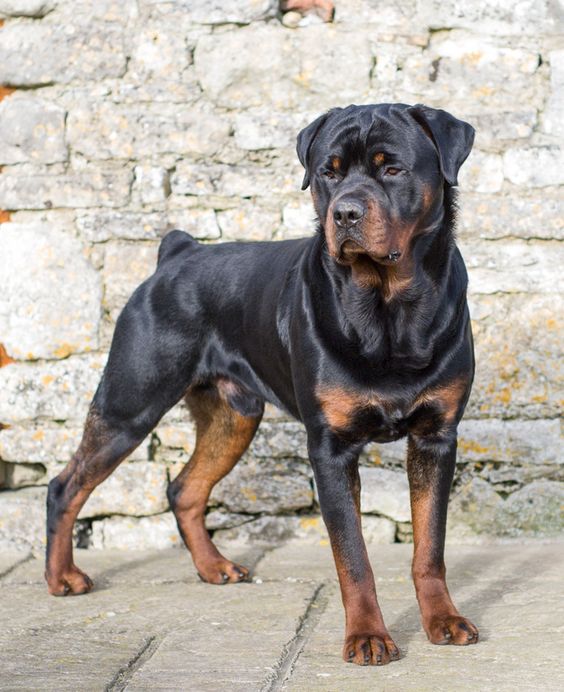
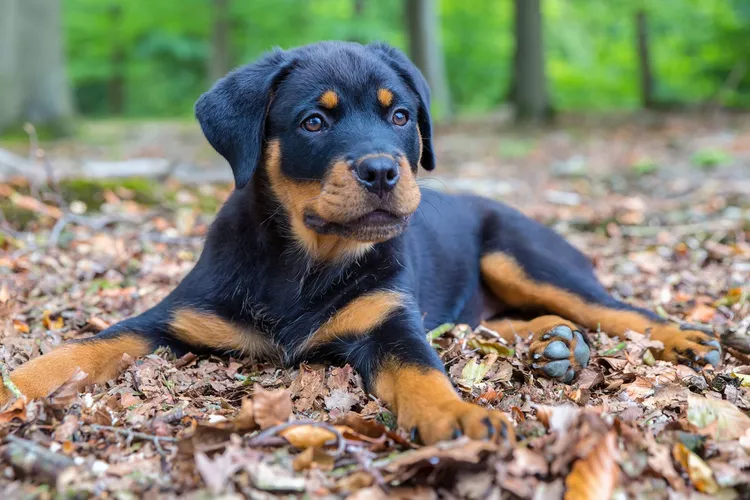
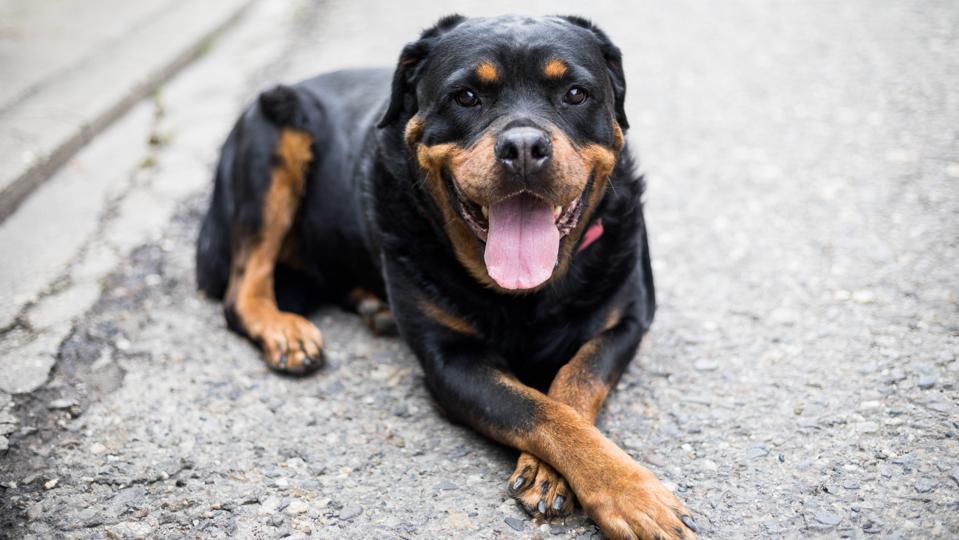
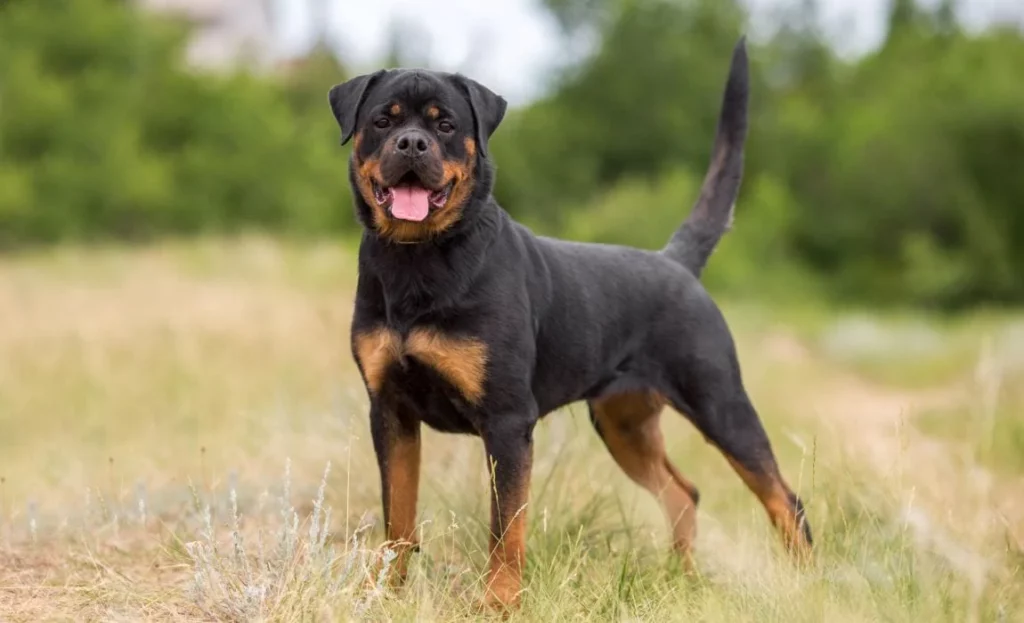
Overview
While their ancestry can be traced back to the Roman Empire, today’s Rottweilers have evolved into versatile working dogs, prized for their strength, intelligence, and loyal temperament.
As descendants of Roman legion mastiffs, they originally served as herders or driving dogs. Modern Rottweilers maintain a robust physique and display a confident aloofness.
They are inherently good-natured, devoted, and protective, making them suitable for family life when adequately socialized. With a predisposition for specific health issues such as hip dysplasia and heart diseases, responsible breeding is essential to mitigate these risks.
Rottweiler dogs benefit from early socialization and comprehensive training to harness their capabilities, ensuring they fulfill roles in herding, security, and service with distinction.
Breed Hallmarks
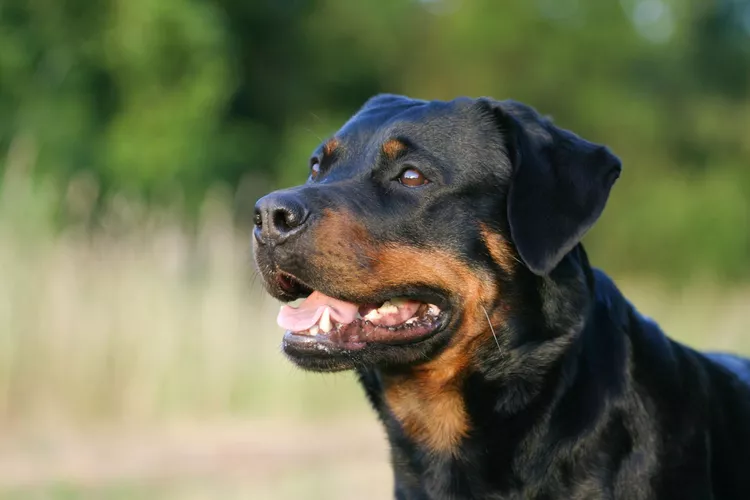
Rottweilers trace back to the mighty mastiffs that marched with Roman soldiers. They have been perfected in the German town of Rottweil. These dogs stand out with their muscular bodies, a unique black and tan coat, and an intelligent yet loyal nature. Their confidence and bravery make them great for protection and as family pets.
| Attribute | Description | Emotional Impact |
|---|---|---|
| Physical Build | Muscular, standing 22-27 inches tall | Impressive |
| Coat | Short, coarse black hair with tan markings | Eye-catching |
| Temperament | Faithful, protective, smart | Comforting |
| Training Needs | Vital need for early socialization | Commitment |
| Protective Instinct | Innate guard dog skills | Safety |
The careful assessment of their traits shows why thorough training and early social interactions are essential. This preparation turns their natural talents into positive characteristics, making them commendable pals.
In the world of dog breeds, understanding and meeting the needs of a Rottweiler is essential for a harmonious relationship. Their sturdy frames can leave an impression of strength, while their coats are visually memorable. These dogs are not just intelligent; they’re also profoundly devoted and naturally inclined to protect, bringing comfort to their owners.
Training is a big responsibility, shaping their social behavior and ability to cope with different situations. The Rottweiler’s instinct to guard can give a household a feeling of safety, but it’s important to channel this instinct properly. When treated with care and respect, Rottweilers are more than just pets; they’re loyal companions and guardians.
Pet Parents: Ancestral Roots
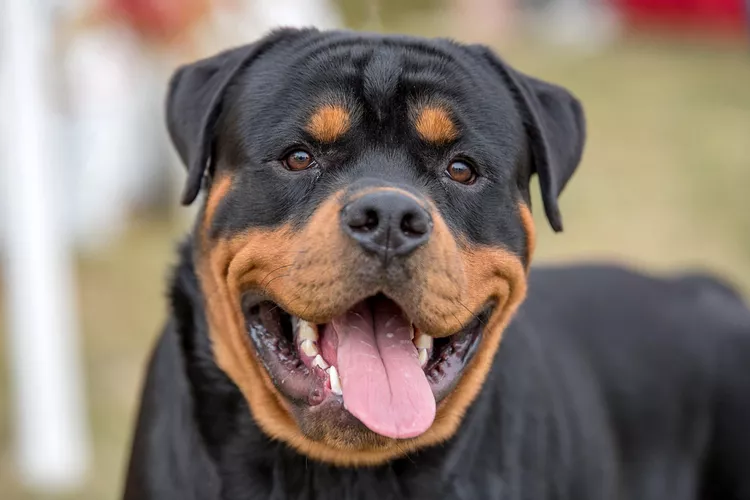
The Rottweiler has a history that dates back to the Roman Empire, where they were descended from mastiffs used by the army. Their roles in herding security have shaped their journey from ancient battlefields to modern homes and as reliable service animals. Over the years, this dog breed’s history has been influenced by the need for dogs that can perform various tasks and by careful breeding that has honed their physical and behavioral characteristics.
- Origin and Ancestry: The Rottweiler’s bloodline begins with the powerful mastiffs of ancient Rome.
- Historical Functions: This breed has been integral in livestock herding, property protection, and dependable assistance.
- Breed Development: The modern Rottweiler results from selective breeding to perfect the breed for various roles.
History of the Rottweiler
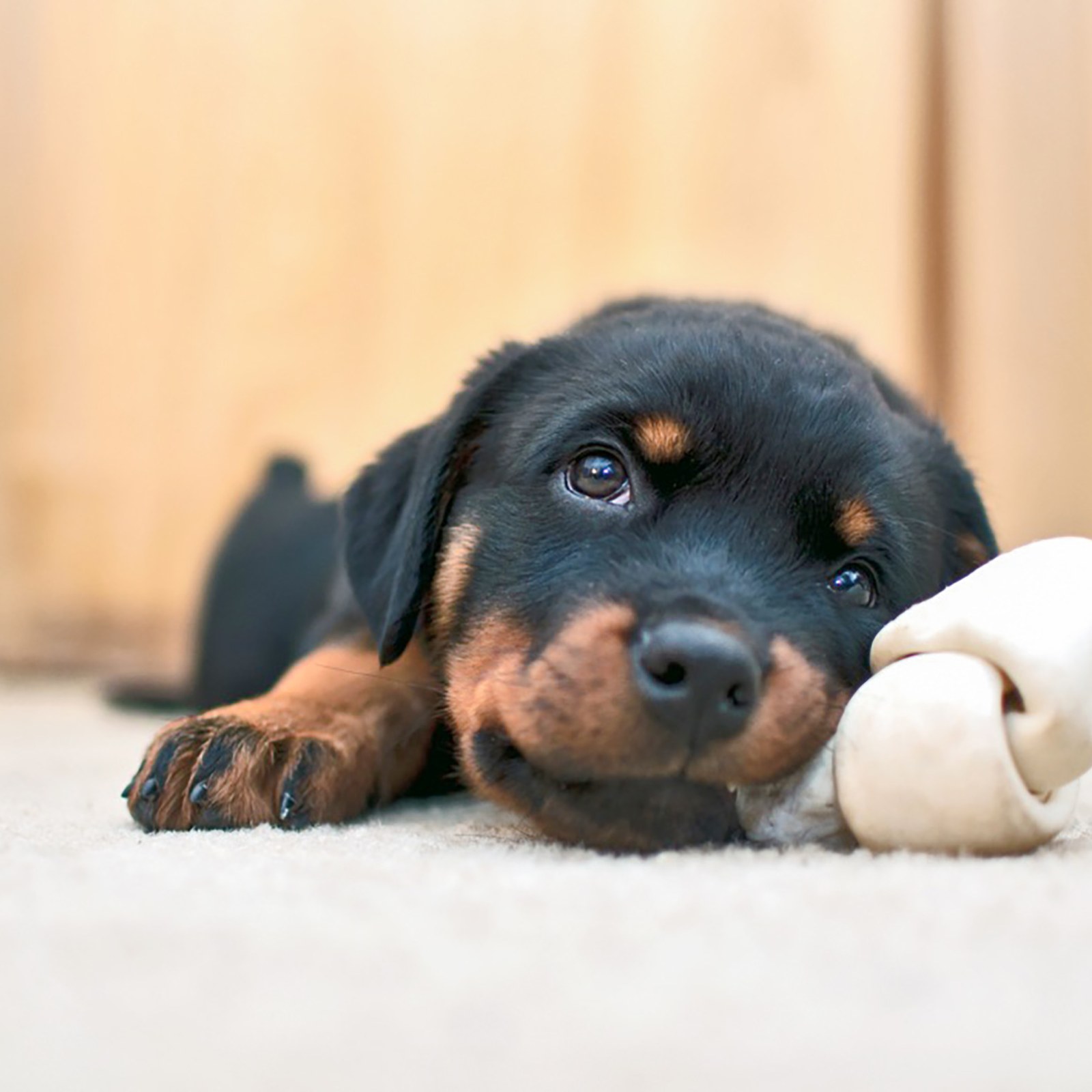
The Rottweiler’s history dates back to the powerful mastiffs that marched with Roman legions. These dogs have been valued for their strength and versatility for centuries. They were developed during the Roman era and continued to evolve into the Middle Ages.
The people who raised them in Rottweil, Germany, bred them with local dogs, improving their skills in herding and guarding.
Through time, Rottweilers have shown their ability to adapt to various roles, from battlefield allies to herding livestock and defending their owner’s property.
Their sturdy build and recognizable black and tan coats nod to their past as fierce protectors and diligent workers.
Historical Functions
Rooted in ancient Roman military might, Rottweilers have evolved from their origins as mastiff-type war dogs to versatile workers, excelling in roles such as herding, guarding, and protection across various historical contexts.
Descendants of robust working dogs, their formidable strength lent itself well to the demands of herding and guarding property. Historically, their self-assured aloofness was crucial as they observed and defended against external threats, maintaining vigilance over cattle and territory.
Moreover, their capacity to pull carts was indispensable for transporting goods, highlighting their functional adaptability. Throughout world conflicts, their historical significance was underscored through various service roles.
These ancestral functions have cultivated Rottweilers into the strong, balanced, and intelligent breed known today, with a deep-seated propensity for work and guardianship.
Breed Development
The Rottweiler has come a long way since its days with the Roman legions. These dogs are descendants of the powerful mastiffs that marched alongside soldiers. Over time, they’ve been bred for their strength and ability to herd and guard. In the Rottweil area of Germany, these dogs mixed with local breeds, leading to the skilled and dedicated German Rottweiler we recognize today.
The Deutscher Rottweiler-Klub played a crucial role in defining the breed. Their guidelines focus on the Rottweiler’s moderate size, formidable strength, and signature black and tan coat. These dogs are known for their well-proportioned build and smooth, purposeful trot that reflects their stamina and vigor. Their thick double skin is not just for looks; it protects them in various climates.
Stature and Build
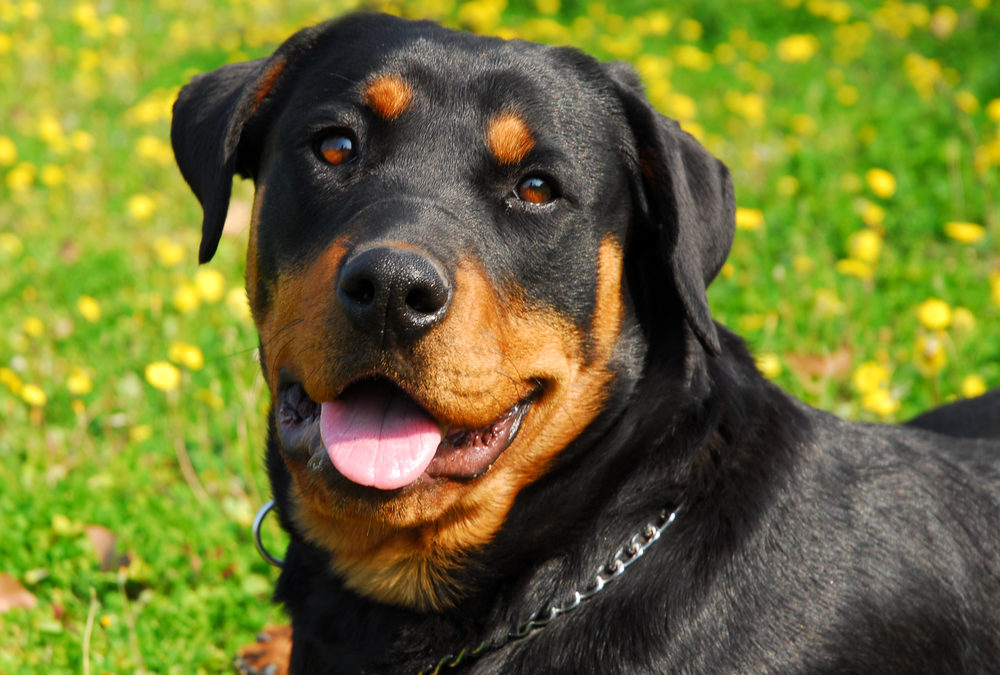
The Rottweiler stands out with its impressive size and dominant presence, essential for its roles and visual appeal. A close look at this breed shows that males are usually taller than females, sticking to the breed’s size guidelines. These dogs are powerfully built, with a strong bone structure and well-developed muscles, all part of their working-dog lineage. Their body is well-proportioned, giving them a sturdy and robust outline.
Height Variations
The Rottweiler’s stature is significant, with males and females having noticeable height differences.
Muscle and Body Weight
Their physical form results from their working background, showing a robust skeletal frame and strong muscles.
The Details of Their Bodily Form
They have a balanced body shape that contributes to their overall powerful look.
Typical Height Range
Rottweilers stand 22 to 27 inches from the ground to their shoulders, showcasing a significant and robust presence. This site reflects their past roles where muscle and alertness were vital. When you see a Rottweiler on its feet, its muscular frame is immediately noticeable.
Generally, male Rottweilers are between 24 to 27 inches tall, and females are a bit shorter, with heights of 22 to 25 inches.
Their size is matched by a weight of 80 to 135 pounds, with males weighing between 95 to 135 pounds and females between 80 to 100 pounds, giving them a formidable look. The Rottweiler’s size goes beyond looks; it’s a nod to their ancestry, showing off their agility, strength, and natural instinct to protect.
The typical height of a Rottweiler underscores their reputation as a dominant and work-ready breed.
Weight and Muscle
Rottweilers are impressive dogs known for their strength and history as working animals. Male Rottweilers usually weigh between 95 and 135 pounds, while female Rottweilers are a bit lighter, ranging from 80 to 100 pounds. They come from a line of Roman mastiffs, which shows in their muscular bodies and robust build. Rottweilers have a well-proportioned body with a medium-sized head, broad chest, and a powerful neck and back. This build gives them a steady and lively way of moving.
Their thick, double-layer coat makes their muscles stand out even more. But, their muscular bodies mean they are more likely to get hip dysplasia. To keep their muscles in good shape, it’s essential for them to exercise regularly and for breeders to be careful about their health.
Physical Structure Details
Rottweilers are well-known for their sturdy and robust build. Male Rottweilers generally stand between 24 and 27 inches tall, while females are a bit shorter, ranging from 22 to 25 inches. These dogs have a proportional body, with a medium-sized head, a pronounced stop, and a broad nose with open nostrils.
Their short coat highlights their muscular physique and compact form. Rottweilers have a broad, deep chest, giving them a robust and balanced look. They move with a lively and coordinated stride. However, a slow, dragging trot is considered a significant flaw since it indicates a lack of the healthy energy the breed is known for.
Bone Density Considerations
Rottweilers have a hefty build and considerable size, making their bone density a crucial aspect of their health. Due to their size, Rottweilers are great for tasks that need strength and stamina, but they can also face bone issues as they age.
It’s vital to feed them well and keep them moving with regular exercise to keep their bones strong. This will help prevent bone diseases. Keeping an eye on their bone health with regular vet visits and bone scans is a must.
This way, we can ensure Rottweilers stay active and avoid problems with their movement and overall well-being.
Balanced Proportions Overview
The Rottweiler breed boasts a strong and agile build, with males standing at a height of 22-27 inches and females a bit shorter at 22-25 inches. These dogs have a broad chest and a sturdy back, with a wide, gently sloping croup that speaks to their physical prowess. Their necks are muscular, holding their heads with a minimal dewlap, which adds to their imposing look. Rottweilers move with a consistent and vigorous gait that matches their well-structured body. Their coats are medium-length, thick, and flat, with a warmer layer around the neck and thighs. Their striking black and tan markings are sharply defined, ensuring the tan doesn’t overtake more than 10% of their body color.
The Rottweiler’s appearance is a blend of power and grace. The breed’s ability to trot effortlessly shows its excellent body structure. Their fur, which is neither too long nor too short, displays the signature black and tan colors in a precise pattern. The tan accents are carefully placed, ensuring they highlight the breed’s features without overwhelming their dark coat.
Rottweiler Personality and Rottweiler Temperament Traits
Rottweilers have complex behavior that is shaped by their genetics, how they are trained, and their interaction with people and other dogs. It’s vital to provide them with a structured setting that harnesses their natural loyalty and allows their guard dog tendencies to be expressed positively. Ensuring they get ample interaction with various situations, steady training, and a robust physical activity schedule is crucial for their growth into stable and friendly adult dogs.
- Strong Connections: Rottweilers are known to develop strong bonds with their owners, making building a relationship based on mutual respect critical.
- Guarding Behavior: To prevent any unwanted aggressive behavior, it’s essential to start training Rottweilers early in life and keep it going as they grow.
- Activity Needs: They require good exercise to maintain physical health and a balanced temperament.
When raising a Rottweiler, remember that this breed needs clear guidance and plenty of exercises. The effort put into their training pays off in the form of a devoted and well-behaved companion.
Loyalty and Bonding
Rottweilers are famous for their loyalty and form strong connections with their owners, making them reliable guardians and loving family pets.
This breed shows intense loyalty and protection, especially towards their own family. They naturally distrust strangers, leading to negative behavior without proper socialization from a young age.
Training them consistently and engaging with them positively is essential to tap into their smarts and promote good behavior.
To bring out the best in a Rottweiler, an owner must be confident and calm, offering clear direction and reinforcing the dog’s role as a friendly, watchful presence in the home.
Choose a dog that has Protective Instincts
Descended from a lineage of guard dogs, Rottweilers have a strong protective instinct. They are always alert and ready to act bravely if they sense their family or home is in danger. Their natural suspicion of strangers and solid build make them good guard dogs. Rottweilers come from a long history of being defense animals, which shows how they act today as pets.
Rottweilers are incredibly loyal and protective when it comes to their family. Owners need to make sure their Rottweiler gets enough socialization and training. This helps keep their defensive behavior under control and prevents them from becoming aggressive for no reason. A well-trained Rottweiler is both a protective guardian and a loving part of the family.
Socialization Needs
Understanding how to socialize Rottweilers is crucial, as their behavior stems from early interactions with people and other animals. These dogs are naturally loyal, confident, and protective. However, without the proper socialization, they could become aggressively defensive. Training and socializing these dogs demands patience and positive reinforcement to bring out their affectionate side.
Rottweilers are instinctive to guard, so exposing them to various situations and creatures is vital to preventing unwarranted suspicion or aggression. Even though they’re playful, their herding instincts should be controlled with proper training.
When socialized well, Rottweilers can become friendly, well-adjusted companions, fitting perfectly into families and society.
Training and Discipline
To shape a Rottweiler’s behavior, owners must train them consistently using positive reinforcement. These dogs learn quickly but sometimes can be headstrong, so focusing on obedience training is critical to tap into their potential while curbing unwanted behaviors.
Integrating plenty of socialization helps them become less wary of new faces and ensures their protective instincts are well-directed. Keeping their minds active is just as crucial; it prevents issues like destructive behavior arising from boredom or lack of mental challenge.
Guarding instincts in Rottweilers must be managed carefully so they act appropriately, especially around children or other animals.
Energy and Exercise
Rottweilers are powerful dogs with a lot of energy. They need regular exercise to stay healthy and sharp. Without it, they can develop health problems like hip dysplasia or heart issues. These dogs should get daily walks and playtime to avoid obesity and keep their hearts strong.
Exercise for a Rottweiler isn’t just about their body. It should also include activities that challenge their brains. This breed likes to work and is naturally good at jobs that require being alert and decisive.
It’s also vital for Rottweilers to get used to being around different people and places early on. Training them with rewards helps them learn to be friendly and behave well in various settings. This way, their physical activities also help them to be well-mannered and adaptable.
Wellness and Longevity Concerns
As a breed, Rottweilers are predisposed to various health issues that can influence their lifespan and quality of life. Factors affecting their longevity include genetic predispositions, environmental conditions, and the standard of care they receive throughout their lives. Preventative measures, including regular health screenings and appropriate lifestyle adjustments, are integral to mitigating these risks and ensuring the well-being of this robust breed.
- Common Health Issues: A review of genetic predispositions and the incidence of breed-specific ailments.
- Lifespan Expectancy Factors: An analysis of hereditary and environmental factors that impact the longevity of Rottweilers.
- Preventative Care Measures: Guidelines for proactive health management to optimize the lifespan and vitality of these dogs.
Common Rottweiler Health Issues
Hip dysplasia is a common issue in Rottweilers, caused by a hip joint that hasn’t formed properly. This can lead to arthritis and difficulties in walking. To help manage this condition in Rottweilers, a thorough plan should involve keeping the dog at a healthy weight, giving it the right amount of exercise, and, in some cases, considering surgery. It’s also wise to check Rottweiler puppies for hip dysplasia early to avoid any problems as they age.
Heart conditions like aortic stenosis are severe risks for Rottweilers, so catching them early and managing them well is critical to avoiding heart failure. Allergies are another issue for these dogs, requiring careful monitoring and changes to their diet when necessary.
Additionally, osteosarcoma, a type of bone cancer, is a severe health concern. Regular vet check-ups are vital so that any signs of this disease can be caught and treated early.
Lifespan Expectancy Factors
Understanding what affects a Rottweiler’s lifespan is crucial for owners who want to ensure their dogs live a long and healthy life. Rottweilers typically live for about 9 to 10 years, but their genes and the care they receive can shape their lifespan.
Choosing a trustworthy breeder is critical because it lays the groundwork for good health by avoiding genetic issues like hip dysplasia and heart conditions.
Ensuring your Rottweiler has a nutritious diet, gets enough exercise, and sees the vet regularly can all help them stay healthy and potentially live longer.
Also, teaching your Rottweiler how to interact with others and training them properly helps maintain a stable temperament, which is just as crucial for their health.
This shows how caring for a Rottweiler’s health is a comprehensive task.
Preventative Care Measures
A solid plan for preventative care is crucial to protect the health and extend the life of a Rottweiler. It’s critical to have a vet keep a close eye on your dog with consistent check-ups and a strict vaccination plan. This helps stop infectious diseases and other health problems before they start.
A balanced diet, rich in vitamins and minerals, is vital for your Rottweiler’s bone and muscle health. Plus, regular exercise is necessary to prevent weight gain, keep the heart healthy, and use up energy that could otherwise lead to behavior problems.
Training and socialization from a young age are essential, too. They teach your dog how to behave and help them get along well with your family.
Look for signs of inherited health issues like hip dysplasia, heart problems, and allergies. If you spot these signs, quick action and getting your vet involved are vital to keeping your Rottweiler healthy.
Puppy and Adult Maintenance Essentials
Rottweilers require diligent maintenance to thrive, encompassing a spectrum of care practices critical for their health and demeanor. A structured grooming routine, adherence to nutritional diet specifications, and fulfilling their exercise needs are foundational to their well-being. Additionally, proactive health monitoring and consistent training are imperative for preventing common ailments and cultivating a well-adjusted temperament.
- Grooming Routine Tips
- Nutritional Diet Guidelines
- Exercise Requirements Overview
Rottweiler Grooming Routine Tips
To keep a Rottweiler’s coat shiny and healthy, it’s best to brush it once a week. This helps control the amount of hair they shed. Use a firm bristle brush or a rubber grooming glove, which cleans their coat and massages the skin to spread their natural oils.
Checking and cleaning a Rottweiler’s ears often is critical to preventing infections. Use a vet-recommended ear cleaner to do this.
Trimming their nails every other month is necessary to stop problems when nails get too long.
Bathing your Rottweiler every 6-8 weeks with a shampoo made for dogs and keeping up with their teeth cleaning is vital for their health, starting when they’re puppies.
Nutritional Diet Guidelines
After you start a regular grooming routine, pay close attention to your Rottweiler’s diet. These dogs need a balanced diet to stay healthy and strong. A good mix of proteins, fats, and essential nutrients is critical, especially for dogs active in sports. Controlling portions and having a specific feeding schedule helps prevent obesity and keeps them in great shape according to size, activity level, and age.
Including various fresh foods like lean meats, fruits, and vegetables can improve their digestion and add essential nutrients to their diet. Avoid giving them leftovers and fatty foods. Checking in with your vet for diet advice is also a good idea.
Ensure your Rottweiler always has access to fresh water and keep an eye on their health to help them stay healthy for years.
Exercise Requirements Overview
A daily exercise plan is crucial for a Rottweiler’s health and happiness, with physical activities and brain games that match their power and zest. These muscular dogs with a working background thrive on structured tasks that use their energy and abilities.
Taking them to dog parks regularly helps keep them fit and allows them to socialize, which is critical to maintaining a good temperament. Training them in activities like search and rescue taps into their instinct to guard and their love for play, keeping their minds sharp.
Regular exercise keeps their muscles toned and helps avoid behavior problems. Sticking to a regular workout schedule is essential to dodge common breed health problems like hip dysplasia, heart conditions, and allergies.
Health Monitoring Strategies
Ensuring regular health check-ups and preventive measures is critical for the well-being of a Rottweiler, focusing on catching breed-specific issues like hip dysplasia and heart problems early.
Recognized for their smarts and brawn, keeping a close eye on these dogs to ensure they remain healthy is essential. Routine visits to the vet for X-rays can help spot hip dysplasia, while tests for the heart can detect any cardiac issues before they become more serious. Feeding Rottweilers a well-rounded diet can help prevent allergies and lower the chances of cancer.
Breeding responsibly can help decrease the chance of passing on genetic disorders. Rottweilers have a coarse, dense, medium-length coat and underlayer that doesn’t need much grooming but should be brushed consistently.
It’s also vital to provide these dogs with mental and physical stimulation. This helps encourage good behavior and keeps them healthy by ensuring they are active and mentally engaged.
Training and Discipline Basics
Training a Rottweiler requires consistency and clarity. Establishing clear rules and boundaries and enforcing them consistently is essential to help the Rottweiler understand what is expected. Positive reinforcement, such as praise and treats, is the best way to encourage good behavior in Rottweilers, as they love to please. Early and varied socialization is crucial to prevent bad behavior, as exposure to different people, places, and situations helps reduce the chances of aggression later on.
Discipline should be balanced, focusing on being firm but kind. This approach helps the Rottweiler understand the consequences of its actions without becoming scared or aggressive. Exercise and mental stimulation are essential to prevent boredom and acting out. It is important not to wait to address bad behavior, as dealing with it promptly helps keep things under control.
Nutritional Requirements for Popular Dog Breeds
Rottweilers require a specialized diet to stay healthy due to their muscular build. Feeding them the right balance of nutrients is essential to keep their muscles strong and prevent obesity, which can harm their joints. Including vitamins and minerals that promote bone health is also vital to ensure these dogs live a long and active life.
- Essentials for a Healthy Diet
- Importance of Protein and Fat
- Dietary Needs for Rottweilers
A diet rich in quality protein and fats is necessary to maintain a Rottweiler’s muscular physique. These nutrients are the foundation for their energy and strength, but avoiding overfeeding is crucial to prevent excessive weight gain. A Rottweiler’s diet should also focus on ingredients that support their joint and bone health, as this is a common concern for the breed due to their size.
Balanced Diet Essentials
A balanced diet is vital for a Rottweiler to stay healthy and energetic. To support their muscular bodies, their meals should be rich in high-quality protein, such as chicken or beef. These proteins are crucial for keeping their muscles strong and providing the stamina they need for their energetic lifestyle.
Fats are also vital, with omega-3 and omega-6 fatty acids playing a significant role in keeping their coat shiny and skin in good condition. Good sources include things like fish oil or flaxseed.
Carbs are another critical component, giving them the energy they need. These often come from whole grains and veggies, providing fiber for a healthy digestive system.
A Rottweiler’s diet should also have the right balance of vitamins and minerals. Calcium and phosphorus, for example, are essential for keeping their bones and joints healthy. While many dog foods offer balanced nutrition, supplements are sometimes necessary to meet their needs.
Always check with a vet to ensure your dog gets everything they need.
Protein and Fat Ratios
For owners of Rottweilers, getting their diet right is vital, focusing on the ideal mix of protein and fat. These dogs have a history as herders and need plenty of protein to maintain their muscles and stay energized. High-quality animal proteins are a must for their well-being, as they provide essential amino acids.
On the other hand, their fat intake should be kept in check. Healthy fats from fish oil and chicken fat are good for energy and metabolic health, but too much can lead to weight gain. Given their role as rescue dogs, their diet should be carefully managed to keep them in top condition.
Maintaining the protein and fat balance is crucial for their strength and long life.
Specific Dietary Concerns
To keep up with their energetic lifestyles, Rottweilers need a diet that matches their specific health requirements. For a Rottweiler named Max, this means focusing on high-quality proteins to support his muscles. He should eat plenty of lean meats, fish, and eggs. To help with common issues like hip dysplasia, it’s good to add supplements such as glucosamine and chondroitin to his meals. These will help keep his joints in good shape.
It’s also critical to pay attention to how much Max eats. Overfeeding can lead to weight problems, which may not be easily noticed due to their dark lips hiding dental issues. A vet should always oversee Max’s diet to ensure it suits his age, activity levels, and health needs. This will keep him happy and healthy.
